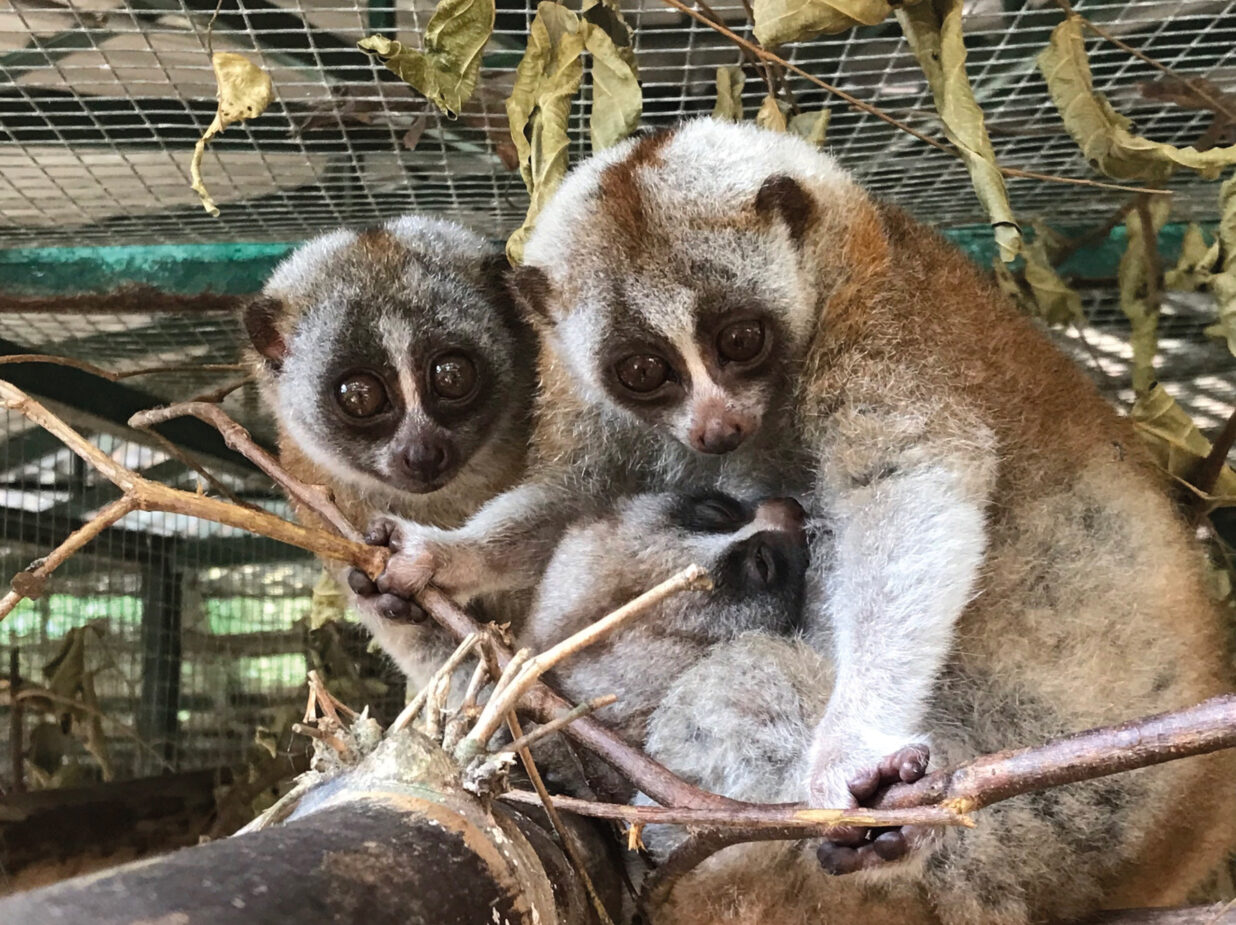Bengal slow loris have the largest geographic range of all slow loris species, native to Bangladesh, north-east India, and Indochina (Cambodia, Laos, Burma, Vietnam, southern China, and Thailand). In Vietnam, Bengal are only found in the north, not naturally from the tropical monsoon forests of the south. This is possibly one of the reasons we primarily are only asked to rescue pygmy loris (naturally found throughout Vietnam). Sadly and surprisingly however, some of the Bengal slow loris we have rescued are not Vietnamese; based on size, colour and now confirmed by genetics. They are illegally smuggled in over the Cambodian border, with origin unclear – possibly Thailand. It is not known if they travel to Vietnam for the illegal traditional medicine or pet trade for use within Vietnam or are simply in transit as they head north to China. The non-Vietnamese Bengal slow loris are small (850g) and rescued William & Anh Thu gave birth to a healthy single infant, named “Helen” in February.
Normally on Dao Tien, rescued pygmy loris are only with us for a few months before their managed return to the wild. Yet for these small Bengal slow loris, not belonging to Vietnam and of unknown origin at this point, they cannot be released. Thus as we care for them longer-term we learn more about a species that is data deficient both in the wild and in captivity. What is becoming increasingly clear is that there is so much that we do not know about Bengal slow loris.
On Dao Tien we have had four Bengal births, all single infants, very different to only twin births at Monkey World. We are not sure about the social groupings in the wild; wild loris field biologists in Bangladesh only ever see single loris at night, yet in Thailand more than one is common. Bengal slow loris appear fussier with the type of gum they eat than the pygmy loris we rescue. Wild Bengal slow loris naturally eat gum higher in toxins. Space is another issue, as although loris are small, they are natural long distance travellers, travelling huge distances at night time. How to support this in captivity is challenging, especially with breeding groups. We learnt that pygmy loris breeding groups need large areas, allowing for significant natural separation time between parent and infant for infant survival. What are the requirements for Bengal slow loris? As we watch Helen grow it appears Anh Thu, the mother, sits back and allows Helen to dominate. The co-feeding documented in slow loris so far does not appear very equal for these. We constantly strive to improve their welfare, observe and learn as geneticists try to confirm where they belong.

